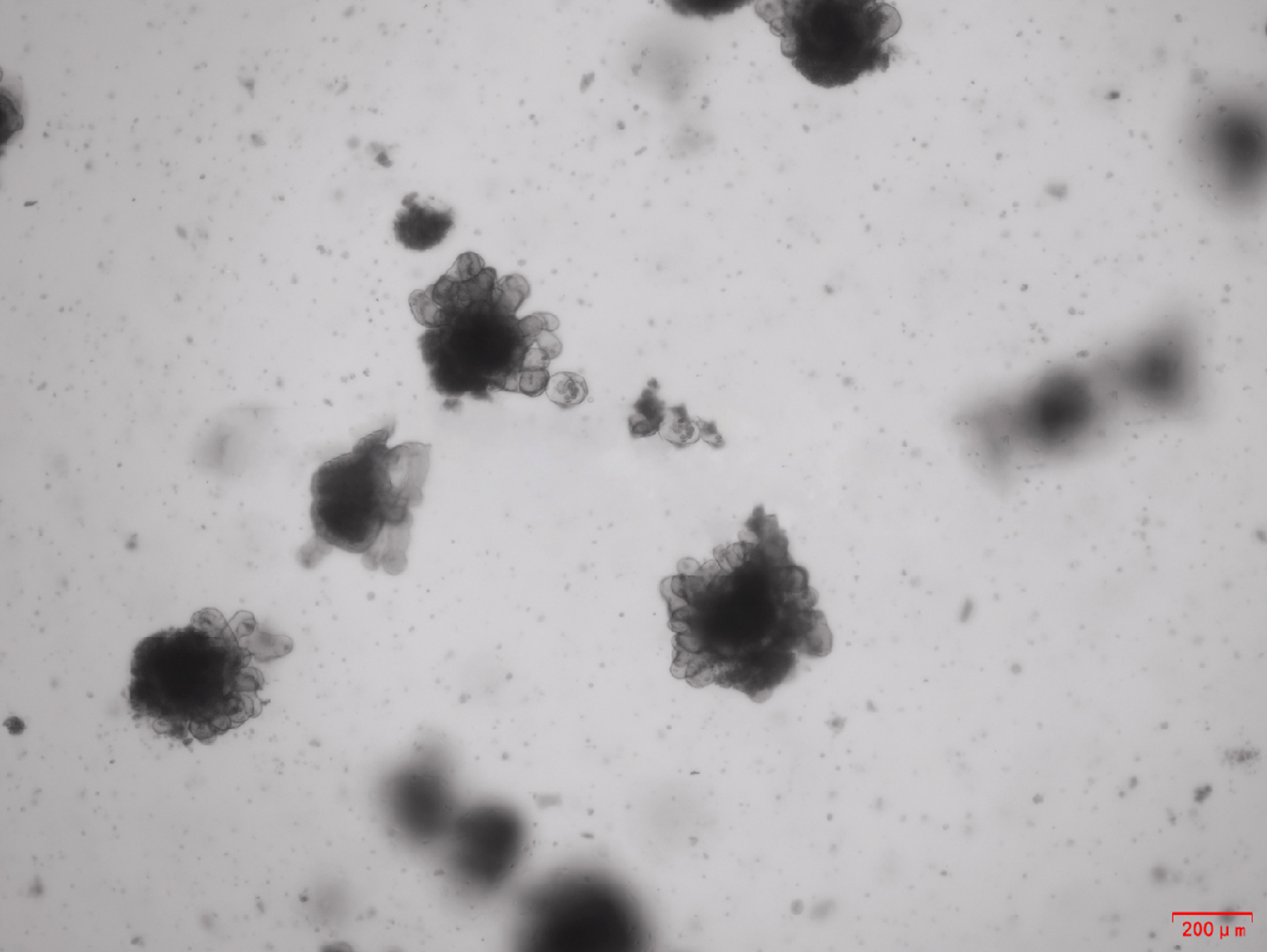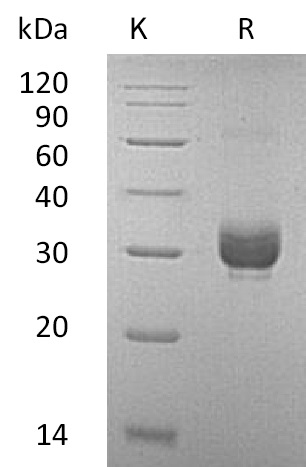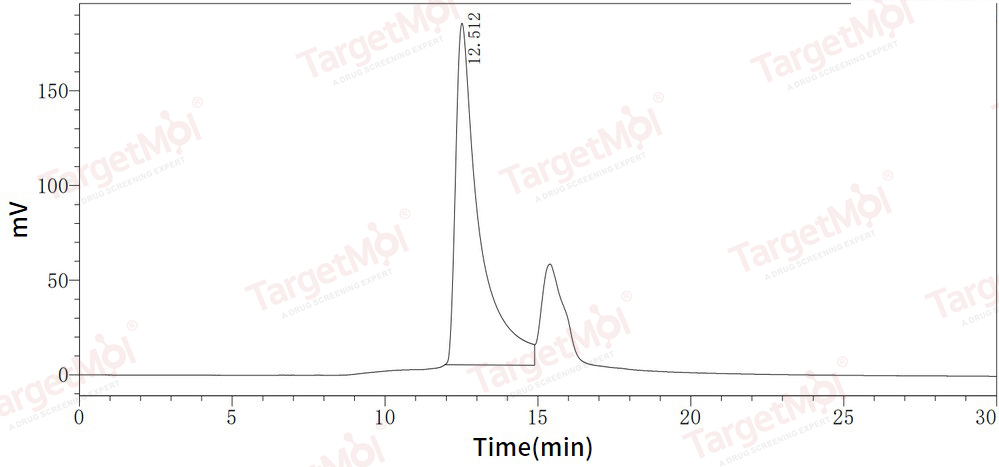- Remove All
 Your shopping cart is currently empty
Your shopping cart is currently empty
Noggin/NOG Protein, Mouse, Recombinant (His)
Noggin is a secreted homodimeric glycoprotein that is an antagonist of bone morphogenetic proteins (BMPs). Mouse Noggin cDNA encodes a 232 amino acid (aa) residue precursor protein with 19 aa residue putative signal peptide that is cleaved to generate the 213 aa residue mature protein which is secreted as a homodimeric glycoprotein. Secreted Noggin probably remains close to the cell surface due to its binding of heparin-containing proteoglycans. Noggin binds some BMPs such as BMP4 with high affinity and others such as BMP7 with lower affinity. It antagonizes BMP bioactivities by blocking epitopes on BMPs that are needed for binding to both type I and type II receptors. Noggin is expressed in defined areas of the adult central nervous system and peripheral tissues such as lung, skeletal muscle and skin. During culture of human embryonic stem cells (hESC) or neural stem cells under certain conditions, addition of Noggin to antagonize BMP activity may allow stem cells to proliferate while maintaining their undifferentiated state, or alternatively, to differentiate into dopaminergic neurons.

Noggin/NOG Protein, Mouse, Recombinant (His)
| Pack Size | Price | Availability | Quantity |
|---|---|---|---|
| 10 μg | $71 | In Stock | |
| 50 μg | $197 | 7-10 days | |
| 500 μg | $1,570 | 7-10 days | |
| 1 mg | $2,230 | 7-10 days |
Product Information
| Biological Activity | Mouse intestinal organoids were cultured with EGF , Wnt3a , Noggin and R-spondin 1 . After five days of culture, the organoids showed good morphology and germination rate.  |
| Description | Noggin is a secreted homodimeric glycoprotein that is an antagonist of bone morphogenetic proteins (BMPs). Mouse Noggin cDNA encodes a 232 amino acid (aa) residue precursor protein with 19 aa residue putative signal peptide that is cleaved to generate the 213 aa residue mature protein which is secreted as a homodimeric glycoprotein. Secreted Noggin probably remains close to the cell surface due to its binding of heparin-containing proteoglycans. Noggin binds some BMPs such as BMP4 with high affinity and others such as BMP7 with lower affinity. It antagonizes BMP bioactivities by blocking epitopes on BMPs that are needed for binding to both type I and type II receptors. Noggin is expressed in defined areas of the adult central nervous system and peripheral tissues such as lung, skeletal muscle and skin. During culture of human embryonic stem cells (hESC) or neural stem cells under certain conditions, addition of Noggin to antagonize BMP activity may allow stem cells to proliferate while maintaining their undifferentiated state, or alternatively, to differentiate into dopaminergic neurons. |
| Species | Mouse |
| Expression System | HEK293 Cells |
| Tag | C-6xHis |
| Accession Number | P97466 |
| Synonyms | Noggin,Nog |
| Amino Acid | Gln28-Cys232 |
| Construction | Gln28-Cys232 |
| Protein Purity | Greater than 95% as determined by reducing SDS-PAGE.; Greater than 95% as determined by SEC-HPLC.   |
| Molecular Weight | 30 KDa (reducing condition) |
| Endotoxin | < 1 EU/μg by the LAL method. |
| Formulation | Lyophilized from a solution filtered through a 0.22 μm filter, containing PBS, 5 mM EDTA, 5% Trehalose, pH 7.4. |
| Reconstitution | Reconstitute the lyophilized protein in distilled water. The product concentration should not be less than 100 μg/ml. Before opening, centrifuge the tube to collect powder at the bottom. After adding the reconstitution buffer, avoid vortexing or pipetting for mixing. |
| Stability & Storage | Lyophilized powders can be stably stored for over 12 months, while liquid products can be stored for 6-12 months at -80°C. For reconstituted protein solutions, the solution can be stored at -20°C to -80°C for at least 3 months. Please avoid multiple freeze-thaw cycles and store products in aliquots. |
| Shipping | In general, Lyophilized powders are shipping with blue ice. Solutions are shipping with dry ice. |
| Research Background | Noggin is a secreted homodimeric glycoprotein that is an antagonist of bone morphogenetic proteins (BMPs). Mouse Noggin cDNA encodes a 232 amino acid (aa) residue precursor protein with 19 aa residue putative signal peptide that is cleaved to generate the 213 aa residue mature protein which is secreted as a homodimeric glycoprotein. Secreted Noggin probably remains close to the cell surface due to its binding of heparin-containing proteoglycans. Noggin binds some BMPs such as BMP4 with high affinity and others such as BMP7 with lower affinity. It antagonizes BMP bioactivities by blocking epitopes on BMPs that are needed for binding to both type I and type II receptors. Noggin is expressed in defined areas of the adult central nervous system and peripheral tissues such as lung, skeletal muscle and skin. During culture of human embryonic stem cells (hESC) or neural stem cells under certain conditions, addition of Noggin to antagonize BMP activity may allow stem cells to proliferate while maintaining their undifferentiated state, or alternatively, to differentiate into dopaminergic neurons. |
Dose Conversion
Calculator
Tech Support

Copyright © 2015-2025 TargetMol Chemicals Inc. All Rights Reserved.


